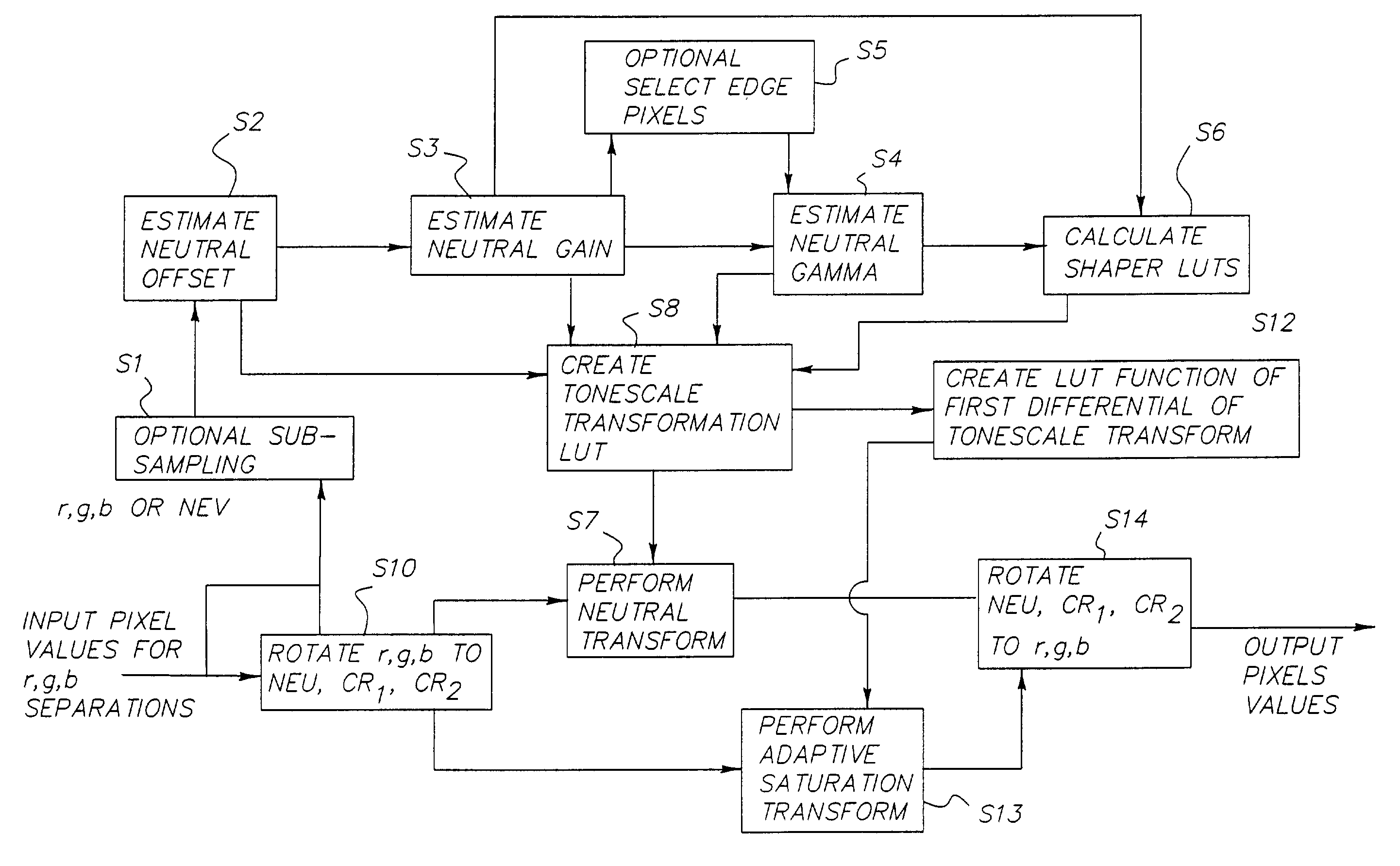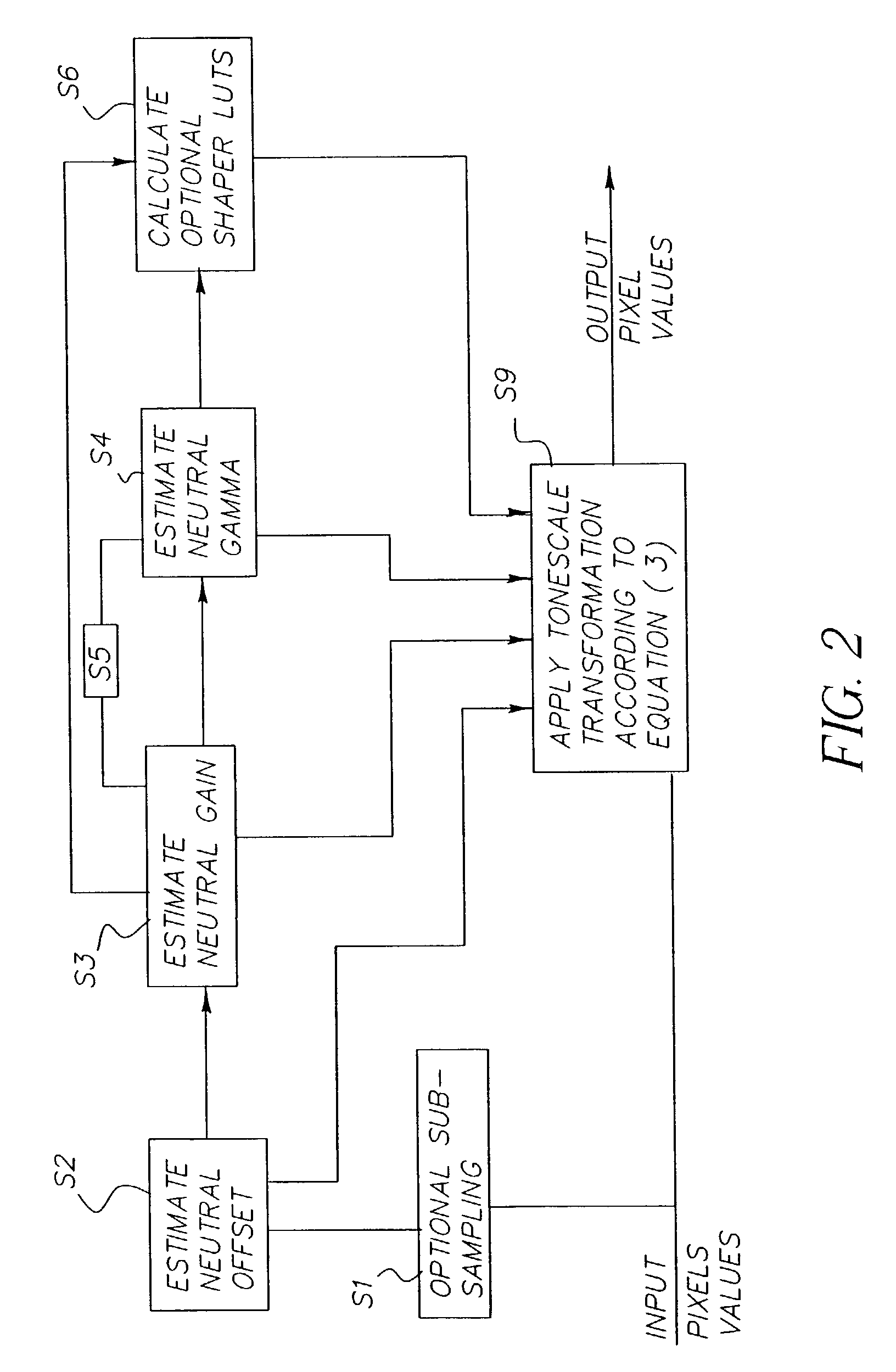Tone scale adjustment of digital images
a digital image and tone scale technology, applied in the field of digital image processing, can solve the problems of unnatural tonescale, unnatural tonescale, and reduced productivity, and achieve the effects of natural tonescale, minimizing clipping, and minimizing the impact of tonescale transformation on image nois
- Summary
- Abstract
- Description
- Claims
- Application Information
AI Technical Summary
Benefits of technology
Problems solved by technology
Method used
Image
Examples
Embodiment Construction
[0046]The invention provides a method to restore automatically or enhance the neutral tonescale of images that are encoded in a non-logarithmic metric (that is a linear or gamma space like sRGB or ROMM). The method does not depend on manual adjustments of brightness or contrast.
[0047]Although the principles of this invention can be employed for neutral tonescale correction or enhancement in any non-logarithmic space, this description and the reduction to practice relate to corrections applied in a ROMM encoding and to provide the reference rendering required by ROMM. The usage has been primarily as part of a digital algorithm for the restoration of faded images, in particular faded reversal images. The definition of the ROMM metric and encoding is described in “Reference Input / Output Medium Metric RGB Color Encodings (RIMM / ROMM RGB), presented by K. E. Spaulding, G. J. Woolfe, E. J. Giorgianni, at PICS 2000 Conference, Mar. 26–29, 2000, Portland Oreg. The principle of a fixed viewin...
PUM
 Login to View More
Login to View More Abstract
Description
Claims
Application Information
 Login to View More
Login to View More - R&D
- Intellectual Property
- Life Sciences
- Materials
- Tech Scout
- Unparalleled Data Quality
- Higher Quality Content
- 60% Fewer Hallucinations
Browse by: Latest US Patents, China's latest patents, Technical Efficacy Thesaurus, Application Domain, Technology Topic, Popular Technical Reports.
© 2025 PatSnap. All rights reserved.Legal|Privacy policy|Modern Slavery Act Transparency Statement|Sitemap|About US| Contact US: help@patsnap.com



